One writer’s loving lament for a changing city
BERLIN, Germany—
One night last summer, I stepped out of my building in central Berlin and couldn’t believe what I saw. My street had turned into one giant party with crowds spilling over the sidewalks as they washed down their vegan prosciutto with gluten-free hefeweizen and organic prosecco. Scraps of French, Italian, English, and Russian drifted over the loud laughter.
It wasn’t a block party but a normal Tuesday night. Somebody must have written about my street on their viral travel blog. Now I had the whole world at my doorstep; I just didn’t have Berlin anymore.
I have a right to complain: I was here way before the beginning of the current era of Berlin coolness, when the front line of the Cold War still ran right through the city. East Berlin was the closed, grubby capital of the German Democratic Republic, aka East Germany. West Berlin was the last stop on the line for the flotsam and jetsam of Western capitalism.
Ever since I moved out of my childhood home in Charleston, Illinois, I’ve spent more time in Berlin than anywhere else—making it my on-again, off-again base when I started out in journalism 20 years ago. I was first drawn to Berlin exactly because it was so far off the beaten track, uninviting and inaccessible unless you made the effort to discover its secrets. After the fall of the Berlin Wall in 1989, it became the most central and affordable city in Europe.
There was no fine dining but plenty of heavy drinking
Berlin is a victim of its own success. The eternal backwater now thinks it’s the navel of the world. If the city’s uncoolness was what once made it cool, its new coolness threatens to make it uncool again. Newcomers wanting to turn Berlin into something it is not are taking over the city. Some changes are undoubtedly positive, but too many of them are not.
The Berlin I once knew was not the kind of place you raved about. There was no fine dining but plenty of heavy drinking. High culture was in constant competition with counterculture, and sophistication made a fleeting appearance only during international events like the Berlin Film Festival. It was never about money and always about attitude. The beautiful people ran London and Munich and Milan. In Berlin, the punks were in charge.
The city’s freakiness was a direct result of the Cold War and the unique ecosystems that flourished in the shadows of the Berlin Wall.
At the end of World War II, West Berlin—located at the heart of East Germany—quickly became an irritant to the Soviets, who were turning the country into a carbon copy of the Soviet Union. In 1948, the Kremlin tried to starve West Berlin into submission by cutting off the road and rail corridors across East Germany. The unintended consequence was a U.S.–led airlift that bound West Berlin even closer to West Germany. To stop its best and brightest citizens from seeking a new life in the West, the East German government built a wall around West Berlin in 1961.
Not everyone wanted to live in a walled-off city that happened to be the place where World War III was most likely to break out. West Germany poured billions into West Berlin to entice businesses and workers to stay. Young men in West Berlin were exempted from the draft. The outcasts of polite West German society—anarchists and artists, immigrants and exiles—all found refuge in West Berlin. They flocked to the rundown neighborhoods abutting the wall where rents were dirt cheap and nobody cared what they looked like or did.
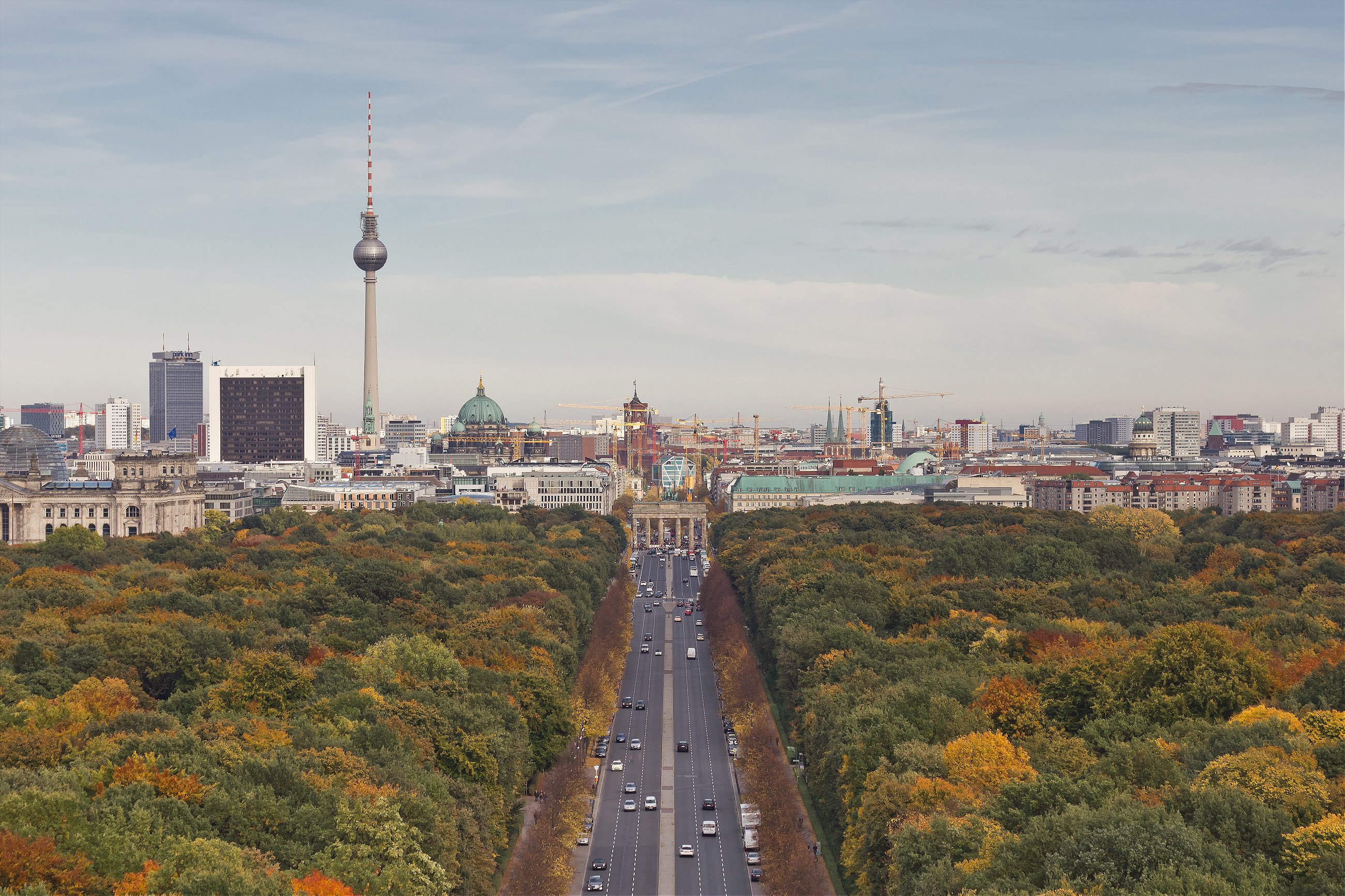
I first visited Berlin in 1988. I had just graduated from high school and was backpacking around Europe on a rail pass. My train from Copenhagen crossed the Baltic Sea on a ferry, then chugged 150 miles across East Germany to the divided city. Before we could enter West Berlin, East German border guards with submachine guns and dogs combed the train for political stowaways, stooping under seats and bursting into lavatories.
Then the train creaked over a rail viaduct across the Berlin Wall with its trenches, guard towers, and coils of barbed wire. Essentially, it was a 100-mile-long prison wall. East German border troops had orders to shoot anybody trying to get away.
It’s difficult to describe the atmosphere inside West Berlin. On the one hand, you were surrounded by all the trappings of West German capitalism: Fanta, Adidas, Mercedes-Benz. On the other hand, you knew that if you went a few miles in any one direction you’d bump up against a wall with a hostile army behind it. West Berlin was an indefensible enclave deep inside enemy territory. If the Cold War suddenly went hot, you were toast. You didn’t think about it most of the time. But deep inside, that knowledge affected everything you did.
As a citizen of one of the four occupying powers, I could get a day visa to visit East Berlin. Foreign tourists were a source of cash for the Communist regime, and I was forced to exchange 25 Deutsche marks for 25 East German marks, even though the black market rate was 1:16.
I took an S-Bahn, a regular suburban train, back across the wall to Friedrichstrasse Station. It was the gateway to a parallel reality. People wore drab, droopy clothing. The cars came in one of two boxy models—the Trabant or Wartburg—painted light gray, sky blue, or green. There were billboards with Communist slogans and ads for tractor brands you’d never heard of. The shop windows displayed sausage links and more drab, droopy clothing.
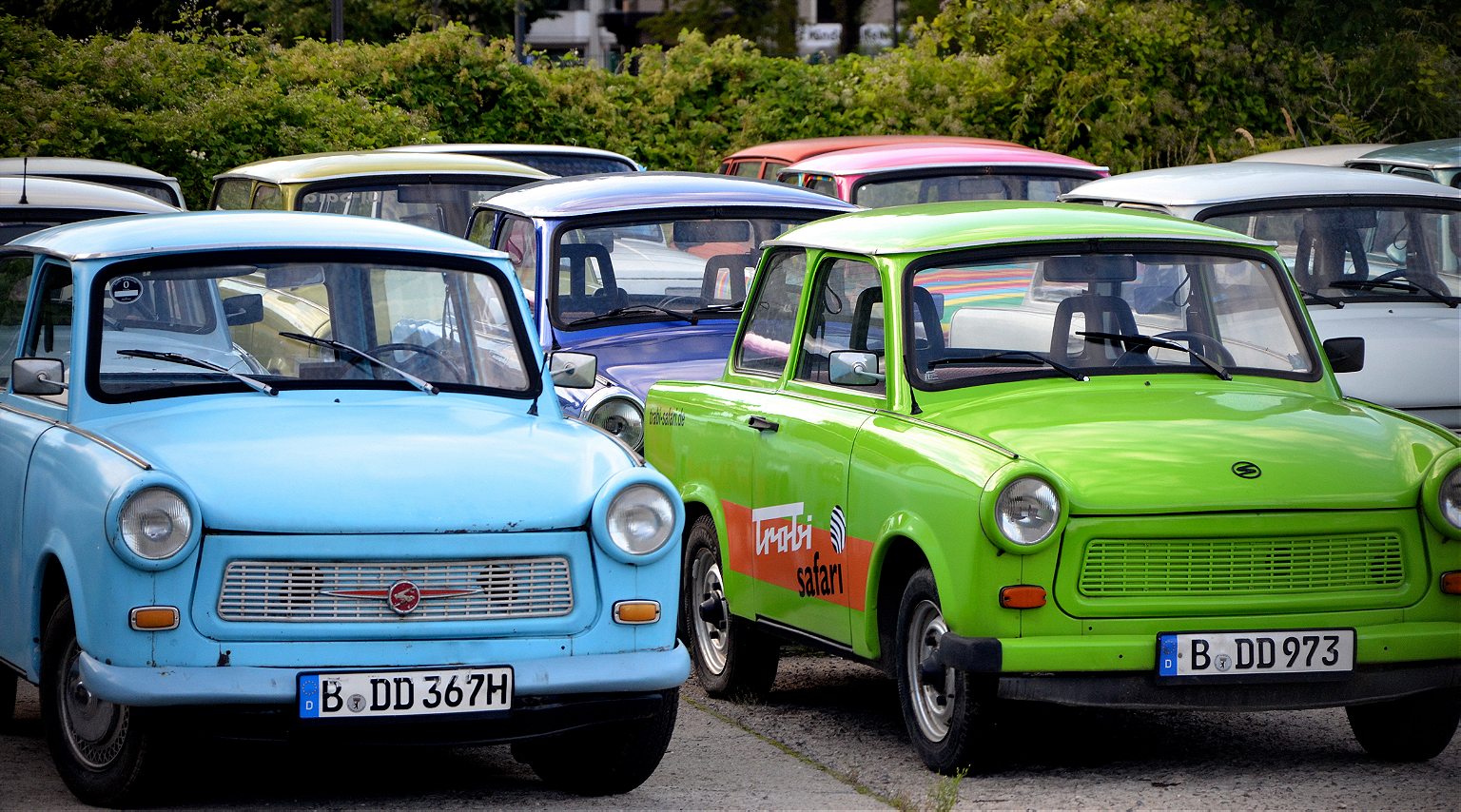
I hit the sights. The Brandenburg Gate, just inside East Berlin, was off-limits because of its proximity to the wall. The line to go up in the TV tower was too long, so I contented myself with the visitors’ center downstairs. There was a sleek model of the East Berlin of the future built out of white cuboids representing high-rise office buildings and apartment blocks. The contrast with the gray, crumbling city outside couldn’t have been starker.
I had 25 East German marks in my pocket that would be worthless once I returned to West Berlin. The problem was that there was nothing to buy. I picked up a copy of The Communist Manifesto for a few pfennigs. When I finally found a place to eat, I burned a little more of my Monopoly money on a slab of pork and a mug of beer. It was a relief to leave the German Democratic Republic after a few hours.
East Germans would have to wait another year before they could do the same. Soviet leader Mikhail Gorbachev’s belated attempts to reform the Communist system were spurring on pro-democracy movements across Eastern Europe. On November 9, 1989, as more and more East Germans demanded the same freedoms that their West German cousins enjoyed, the authorities in East Berlin buckled under the pressure and opened the wall. Berlin and Germany were on track to reunification within less than a year.
The city was in this in-between stage when I returned as a college student. The wall was still standing but the border controls had disappeared. People moved freely between the two halves of the city in a trance of disbelief and euphoria.
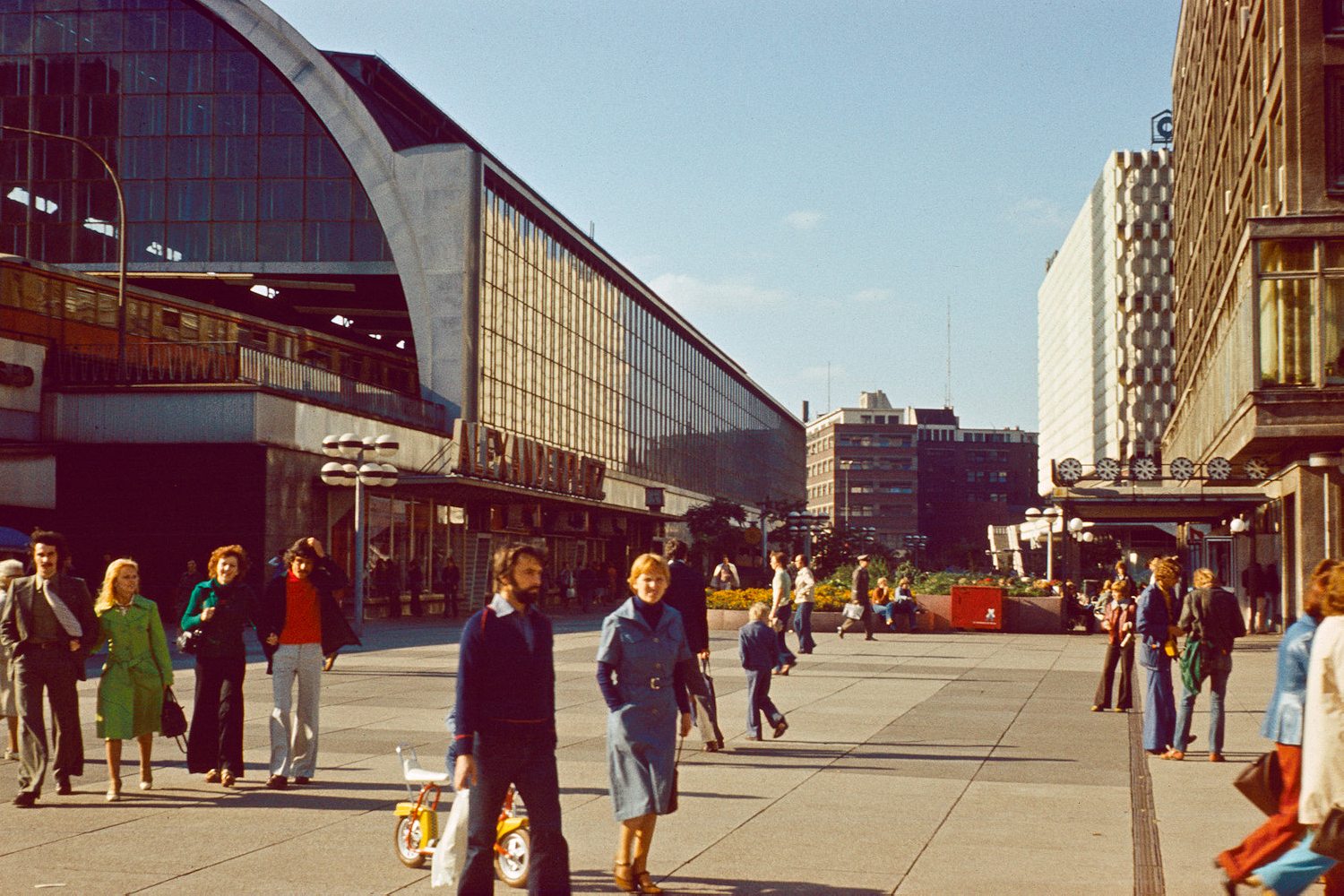
The summer of 1990 was one big bash. I found a bed in an old building squatted by East Berlin punks. I paid for my room and board with beer money and was expected to help defend the house from attacks by skinheads. A bucket of cobblestones stood ready on the balcony while chicken-wire mesh hung over the windows to keep Molotov cocktails out. With a couple of visiting anarchists from West Germany, we careened from one party to the next on rickety bicycles.
Berlin’s isolation was broken. We felt it and celebrated it, but we couldn’t fully grasp its significance. Anybody who shared the city’s ethos of “live and let live” was now welcome here. Rents were ridiculously cheap because there was a surplus of housing. The tribulations of the past half-century—two dictatorships, a war, the Holocaust, the wall—meant that 1 million fewer people were living in Berlin in 1990 than in 1940.
It took me another six years before I moved to Berlin. I dropped out of journalism school in California to accept a Fulbright fellowship for young journalists. I arrived with a couple of suitcases and found a sublet in Kreuzberg, a bohemian neighborhood in the former American sector. My place was located a mile south of Checkpoint Charlie, where U.S. and Soviet tanks faced off in 1961. Tempelhof Airport, a U.S. air base during the Cold War, was so close that after one trip I walked straight from the tarmac to my apartment in 15 minutes.
“Apartment” is a bit of a stretch. For a little more than $150 a month, I rented a room with a sliver of a kitchen in a mietskaserne, or “rental barracks,” constructed at the turn of the previous century. Many of these tenements had shared toilets in the stairwells, so I was lucky to have my own facilities. A shower stall stood next to my kitchen sink, supplied by an electric heater that produced a trickle of warm water. The main room was heated by a tiled stove which I stoked from coal briquettes stacked in the corner. Once, when I left for a trip in the dead of winter, I stored my wine in the fridge because it would be the warmest place in the unheated flat.
Berliners, previously just grumpy, were now neurotic, too
Sometimes my living conditions felt Dickensian, but technologically I wasn’t worse off than any other journalists at the time. I had a fax machine and a reliable dial-up internet connection. Most of the money I saved on rent paid for gonzo reporting missions to places like Kosovo and Tajikistan. The rest of it went to the Haifischbar down the street, one of Berlin’s first cocktail bars.
Having a good time in Berlin is often reduced to its legendary nightlife. But I experienced some of my most memorable Berlin moments in the apartment just below mine hanging out with my neighbor, Frau Jones. She was 70-something, wore cat-eye glasses and flowered housedresses, and puffed nonstop on filterless Pall Malls. Frau Jones, or Lisa as she told me to call her, had grown up one district over in Neukölln. Her first husband was a Nazi who served in Hitler’s air force during World War II and was shot down over Italy—during a reconnaissance mission, she reassured me.
In the anarchic days after the Red Army marched into Berlin, Lisa hid from marauding Soviet soldiers in a cellar and smudged her face with coal dust to look as unattractive as possible. She started trading cigarettes and nylons on the black market to make ends meet. Lisa met a U.S. soldier named Jones, married him, and followed him back to America. He became an alcoholic—probably a victim of PTSD—and Lisa tried her luck in Canada, working herself up as a buyer for a big Montreal department store.
Lisa returned to Berlin to live out her last days on the modest U.S. government pension she received as the widow of a G.I. “You know, I’m through with men,” she would always tell me. “I have no use for them.” Like most Berliners of her generation, Frau Jones was a survivor. Her humor was hard and unsentimental.
I found a nicer apartment with central heating and a bathroom that cost double my old rent. Berlin was still not on the radar of most global nomads, and Berliners were largely oblivious to how good they had it. Germany’s capital officially moved from Bonn to Berlin, but the country’s movers and shakers preferred to keep their business in the western metropolises of Frankfurt, Munich, and Hamburg. Cut off from the rest of the world for half a century, Berlin felt like a small town most of the time. There were rarely traffic jams, and nobody saw the need to stand to the side on escalators in the subway. The only people in business suits and a hurry were politicians or foreigners.
I got bored and relocated, first to Budapest, then to Moscow. I visited at least once a year, but I lost touch with Berlin’s vibe. When I moved back nine years later, I barely recognized the place. Berliners spoke English and ate decent Mexican food. Fancy glass condos were filling the bombenlücken, or “bomb gaps,” as vacant lots left over from the Allied air raids during World War II are known. Drab working-class neighborhoods were being gentrified, and it was increasingly difficult to find an apartment. Traffic was getting crazy. Berliners, previously just grumpy, were now neurotic, too. Yogis and shrinks were in business.
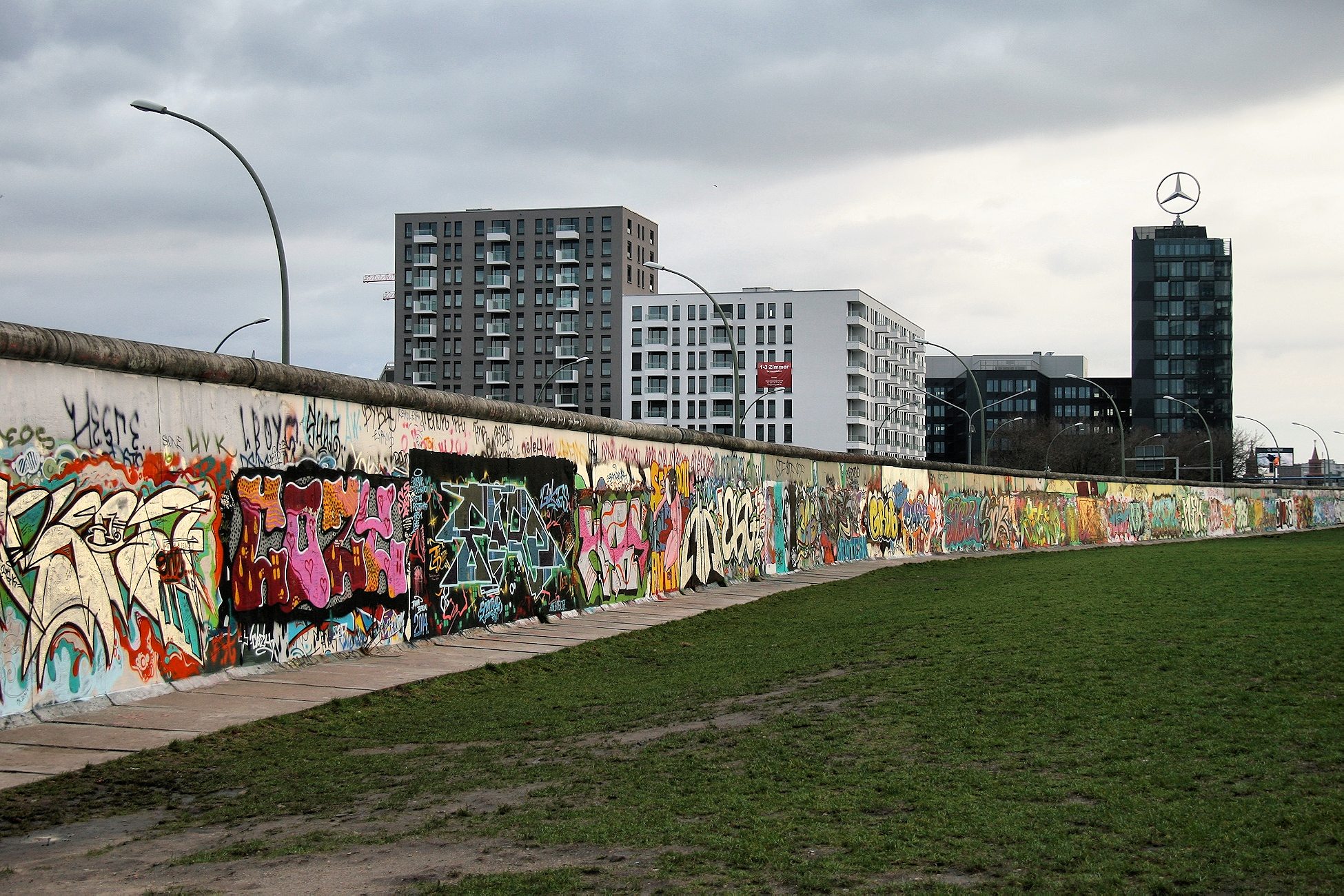
Berlin is like a rebellious teenager who has finally grown up and is surprised that the rest of the world takes him seriously. In its brief, interrupted history as the capital of Germany, Berlin enjoyed a golden age as Weltstadt, or “world city,” only in the 1920s. Then the Nazis seized power, Hitler ravaged Europe, and Berlin was condemned to a divided existence behind the Iron Curtain. German reunification paved the way for the European Union’s integration of former Communist countries. But German reunification was only possible after Berlin reunified.
The marginal becoming central is a recurring theme in Berlin’s development. After the Berlin Wall came down, the grungy districts on the eastern fringes of West Berlin woke up in the center of the reunified city. Similarly, Berlin suddenly found itself at the heart of a reunited Europe.
In cultural terms, West Berlin’s unabashed dorkiness is the secret to the city’s mainstream international appeal today. That is the paradox of Berlin. I don’t want to turn back the clock, even if that was possible. I prefer Berlin’s new global outlook to its provincialism of yore. After almost a century, the city is finally reclaiming its rightful place as a Weltstadt.
At the same time, a new kind of xenophobia is taking root—not toward foreigners per se, but toward annoying strangers whatever their nationality: rich southern Germans buying up the best real estate; Brooklyn hipsters seeking to impose IPAs on Germany; the clueless tourists disgorged daily on the city by low-cost airlines.
Berlin’s unloved guests clog the streets with barbaric conveyances: Segways, pimped Trabants, romantic buggies, and beer bicycles—bars on wheels with pedals. Visiting Berlin has been robbed of any adventure, unless trying to get into Berghain is now considered taking a risk.
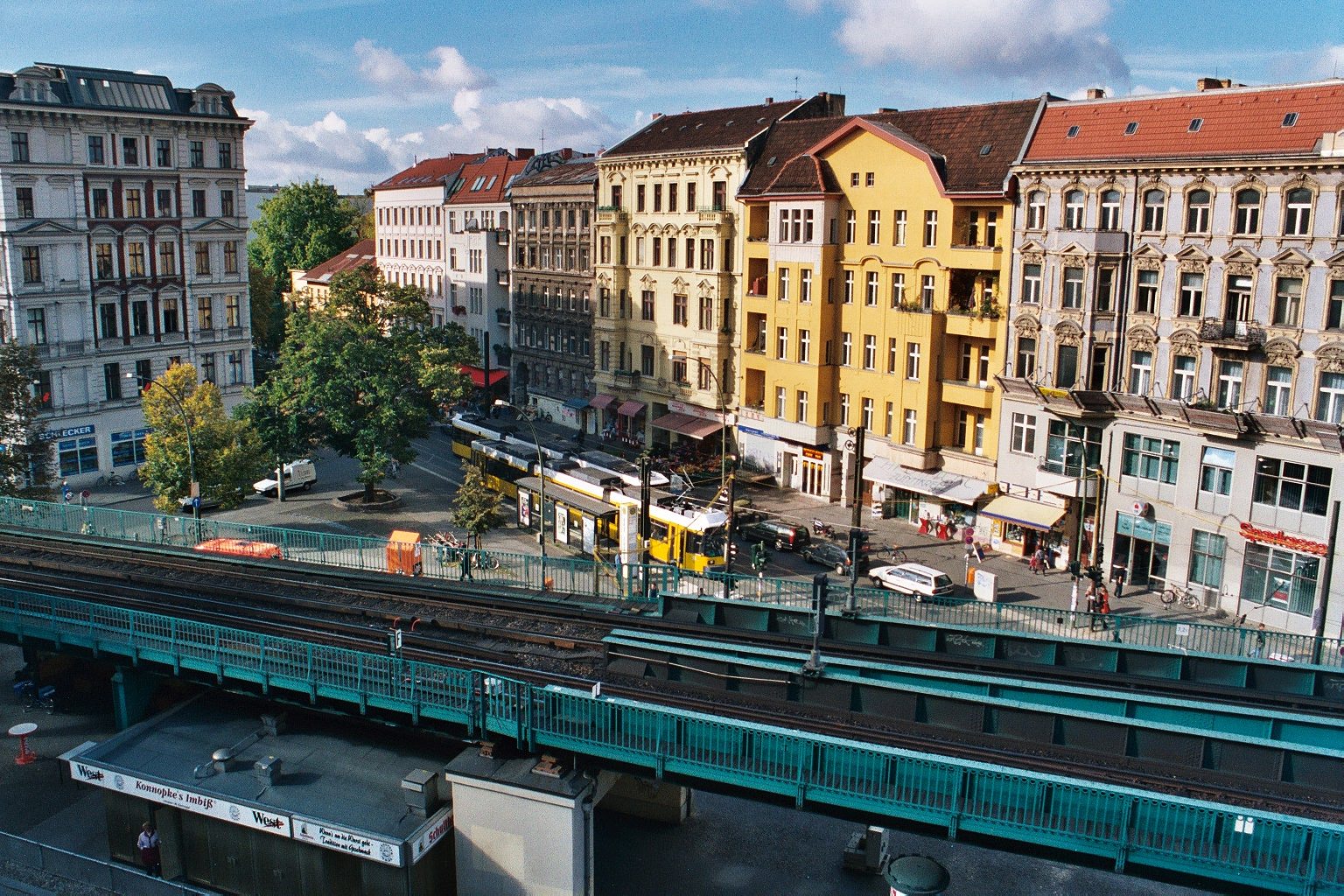
Back in the days when the wall was still up, nobody came to Berlin by accident. Plane tickets were too expensive, so you either had to hitchhike or take a train across two heavily fortified borders. You never forgot where you were because your surroundings constantly reminded you. And you wanted to be here and not anywhere else.
The other day I saw a long line outside the Madame Tussauds wax museum near the Brandenburg Gate. Who would bother coming all the way to Berlin to see a London attraction? An American pub advertises itself as “a New York neighborhood-style bar”—as if Berlin had a shortage of neighborhoods, bars, or New Yorkers. Somebody opened a pastrami sandwich shop that nobody heard about until it was reviewed in the New York Times.
Over the past three years, I’ve lost several neighborhood businesses to gentrification: a couple of bars, a Turkish–Chinese takeaway, and my local supermarket. On warm nights, accordion music wafts in through the open window as if I were now living in an alleyway in Montmartre.
One day last summer I stopped to get an ice cream in the store downstairs owned by a Turkish immigrant family. The owner told me he had gotten rid of his freezer as he had to close shop because the rent was doubling. The only other ice cream available on my street was artisanal, organic kale sorbet. That’s the new Berlin.
What I needed, though, was a fluorescent orange popsicle bright enough to guide an airplane into its docking position. That’s still the real Berlin: unsophisticated, unfashionable, and probably not very good for your health.
Cover image: Paul Sableman
